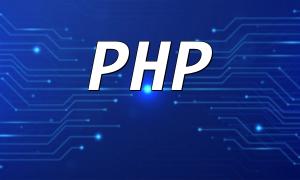Introduction:
With the rapid development of the internet, blog systems have become an important platform for people to share knowledge and experiences. To ensure the good performance of the blog system and provide a smooth user experience, developers need to focus on performance monitoring and optimization. This article will introduce some common performance monitoring methods and optimization techniques to help improve the overall performance of PHP-based blog systems.
1. Performance Monitoring
Performance monitoring involves collecting and analyzing system operation data to understand its performance status. Below are some common performance monitoring tools and methods:
- Response Time Monitoring: Response time refers to the amount of time it takes from when the user initiates a request until the system returns the result. By recording the start and end times of each request, the average response time can be calculated. Here is an example code:
$start = microtime(true);
$end = microtime(true);
$responseTime = $end - $start;
- CPU and Memory Monitoring: Monitoring the CPU usage and memory consumption of the system helps developers understand the system's resource consumption. PHP provides built-in functions to obtain relevant data. Example code:
$cpuUsage = sys_getloadavg()[0];
$memoryUsage = memory_get_usage(true);
- Database Performance Monitoring: The database is a core component of the blog system, and its performance directly impacts the overall system efficiency. By recording the execution time of each database operation, developers can identify performance bottlenecks. Example code:
$start = microtime(true);
$end = microtime(true);
$queryTime = $end - $start;
2. Performance Optimization
Performance optimization refers to enhancing the system’s performance by optimizing code and system configuration. Below are some common optimization techniques:
- Reduce Database Queries: Database queries are a common bottleneck in blog systems. By using caching, batch operations, and optimizing query statements, unnecessary database queries can be significantly reduced.
- Use Caching: Caching is an effective way to improve system performance. Common caching methods such as Memcached and Redis can help store frequently accessed data, avoiding repeated computations and queries.
- Use Asynchronous Processing: For time-consuming operations (e.g., comments and likes), asynchronous processing can be used to defer these tasks, reducing the waiting time for user requests. For example, operations can be placed in a message queue and processed asynchronously.
- Code Optimization: Optimizing code helps reduce resource consumption and improve system efficiency. For instance, removing redundant code, merging duplicate code snippets, and using more efficient algorithms are all good ways to enhance performance.
Conclusion:
Through proper performance monitoring and optimization techniques, developers can significantly improve the performance of a PHP-based blog system. This article covered common performance monitoring methods and useful optimization tips, and we hope it will assist developers in solving performance issues during the development and optimization of blog systems.








